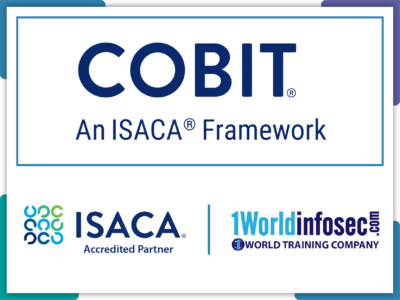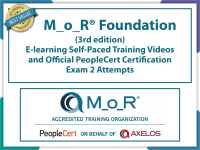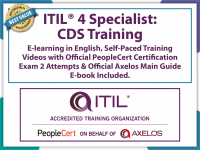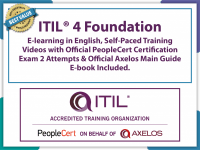Overview of the COBIT Foundation Certification
COBIT 2019 is the latest iteration of the industry-leading framework for governance and management of enterprise IT, and provides best practices for the governance and management of enterprise information and technology.
This COBIT 2019 training course provides the knowledge needed to pass the COBIT 2019 Foundation certification exam, including a comprehensive understanding of the COBIT 2019 framework, the six key governance principles, and the components of a comprehensive governance system. You will learn about COBIT 2019’s forty governance and management objectives, how performance is managed, and how to design and implement a tailored governance system for your enterprise.
What You’ll Learn
Learners will dive into the heart and structure of the of the COBIT® framework, including:
- New framework introduction
- Key concepts and terminology
- Governance and Framework Principles
- Governance system and components
- Governance and management objectives
- Performance management
- Designing a tailored governance system
Training Prerequisites
- There are no professional perquisites, however, there is preparation recommended to ensure success.
- Learning Tree’s Pre-Course Study Guide is sent to students for pre-course reading.
- The Study Guide enables you to download key COBIT 2019 information that will be required for the course.
COBIT 2019 Training Outline
Module 1: Key Concepts and Terminology of COBIT 2019
- Structure and format of the COBIT 2019 framework
- Key stakeholders of COBIT 2019
- Business benefits provided by COBIT 2019
Module 2: Analyzing the Six Governance Principles
Provide stakeholder value
- Benefits realization
- Risk and resource optimization
- Supporting the creation of business value through IT
- Transforming stakeholder needs into an enterprise’s actionable strategy
- Clarifying the purpose of the goals cascade
- Translating high-level enterprise goals into specific IT-related goals
Holistic approach
- Evaluating the key components of a governance system
Dynamic governance system
- Creating a dynamic governance system
Governance distinct from management
- Distinguishing between governance and management in an enterprise
- Relationships between governance and management
Tailored to enterprise needs
- Using design factors to produce an enterprise-specific governance system
- Using COBIT variants to tailor for a specific purpose or context
End-to-end governance system
- A framework for business and IT leaders
- Interrelating key roles and activities
Module 3: Analyzing the Three Governance Framework Principles
Based on conceptual model
- Identifying key components
- Relationships between key components
- Maximizing consistency and allowing automation
Open and flexible
- Updating content
- Addressing new issues
- Maintaining integrity and consistency
Aligned to major standards
- Alignment between COBIT and related standards, frameworks and regulations
Module 4: The Governance System and Components
COBIT 2019 Core Model
- The forty governance and management objectives
- The five-domain structure
Principles, policies, procedures
- Meeting good practice requirements for the scope, compliance, exceptions and monitoring
- Differentiating policies, principles and procedures
Processes
- Reviewing the key characteristics of the process goal categories
Organizational structures
- Implementing practices for operations, responsibility delegation and decision-making
- The key responsibilities of key organizational roles
Culture, ethics and behavior
- Creating, encouraging and maintaining desired behaviors
- Relating organizational and individual ethics with goals
Information
- Reviewing the information quality categories
- Interrelating the five steps of the information cycle with the information enablers
- Applying information attributes to layers
- Assessing context and quality of information to the user with key attributes
Services, infrastructure and applications
- Analyzing the five architecture principles that govern the use of IT-related resources
- Relationship with the other enablers
People, skills and competencies
- Defining skill requirements for each role
- Mapping the skill categories to the process domains
- Skill categories in relation to the process domains
Module 5: Performance Management with COBIT 2019
Performance Management Principles
- Simple to understand and use
- Consistent with conceptual model
- Providing reliable, repeatable, relevant results
- Flexible to suit different organizations
- Supporting multiple assessment types
Managing performance of processes
- CMMI-based process capability scheme
- The six process capability levels
- Focus area maturity levels
- Managing performance of other components
Module 6: Designing and implementing a tailored governance system
The design process
- Understanding the need for tailoring
- Using design factors and variants
- Stages and steps in the design process
The relationship between design and implementation
The COBIT 2019 seven phase implementation approach
- What are the drivers?
- Where are we now?
- Where do we want to be?
- What needs to be done?
- How do we get there?
- Did we get there?
- How do we keep the momentum going?






